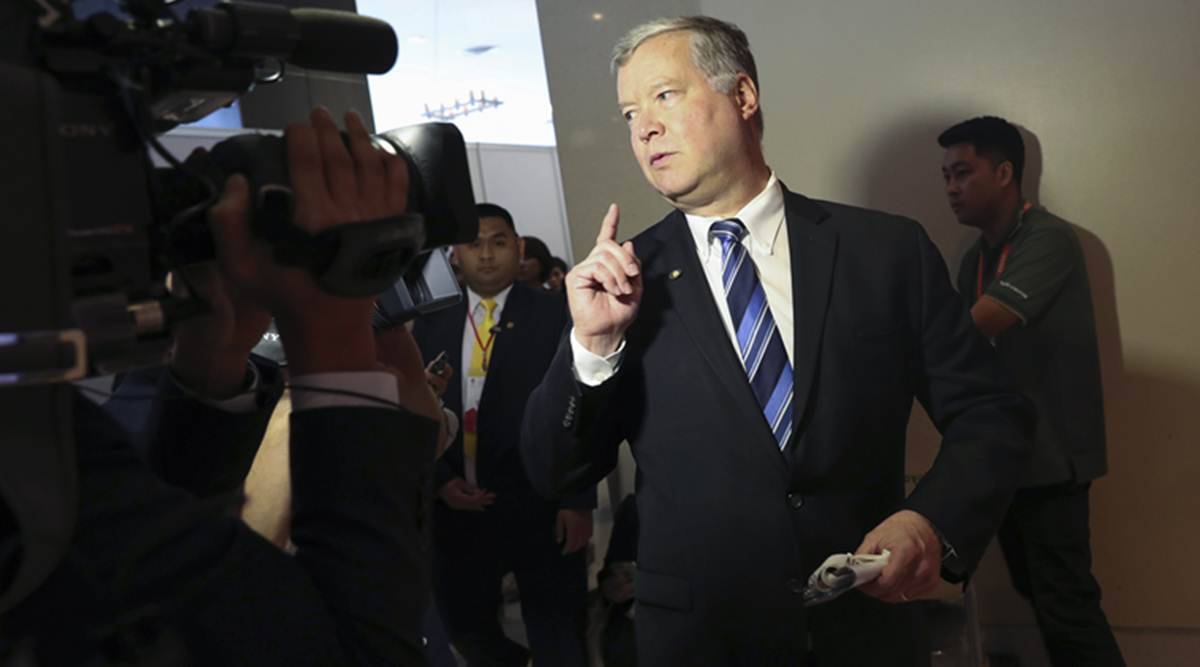
SOURCE: ENS
A month after slamming China for picking a fight right now on virtually every front, the US Deputy Secretary of State Stephen E Biegun will be travelling to India from October 12 to 14 — in a clear strategic signal to Beijing.
The visit assumes significance at a time when India and China are locked in a border stand-off for more than five months now, and it coincides with the next round of India-China Corps Commander-level talks on October 12.
The visit is also likely to set the stage for the Indo-US 2+2 ministerial meeting later this month. While there is a possibility of a 2+2 meeting on October 26-27, it will depend on the evolving situation in the pandemic. The two sides are keen to wrap up the ministerial before the Nov 3 US Presidential polls, as a consolidation exercise of the past four years’ efforts.
Biegun’s visit is the visit by a top US administration official since the border crisis began — apart from US envoy on Taliban reconciliation process Zalmay Khalilzad’s two visits in May and September.
Biegun has had a series of weekly phone calls since late March with Foreign Secretary Harsh Vardhan Shringla and has been extremely supportive of New Delhi amid the COVID-19 crisis and the border stand-off.
Speaking at a think tank event in August end, Biegun had said that the United States seeks to “push back against” Beijing and that China is in “near hostilities with the Government of India” among the aggressive behaviour against several countries.
“And so from China’s perspective, whatever they’re doing can’t possibly be seen as working as they’re picking a fight right now on virtually every front and on every area of interest that the People’s Republic of China has,” he had said.
A US State Department statement on Friday said that from October 12-14, the Deputy Secretary will visit New Delhi, India where he will meet with senior government officials.
“Building on Secretary Pompeo’s October 6 meeting with Indian Minister of External Affairs Dr. S. Jaishankar and ahead of the U.S.-India 2+2 Ministerial Dialogue later this year, Deputy Secretary Biegun’s engagements in India will focus on advancing the United States-India Comprehensive Global Strategic Partnership and how the United States and India can work together to advance peace, prosperity, and security in the Indo-Pacific and around the globe,” the US statement said.
From October 14-16, Deputy Secretary Biegun will visit Dhaka, Bangladesh to meet with senior government officials and reaffirm the United States-Bangladesh partnership, the statement added.
From New Delhi’s perspective, Biegun’s visit comes right after the second Foreign ministerial meeting of the Quad grouping in Tokyo, which was attended by External Affairs minister S Jaishankar, US Secretary of State Michael R Pompeo, along with Foreigns ministers of Japan and the US. In that meeting, Pompeo had named China while Jaishankar had talked about respecting “territorial integrity and sovereignty”.
While Pompeo has been slamming Beijing regularly over the last few months, Biegun has been the main point of contact for India’s diplomatic outreach to the US administration in the last few months of the border crisis.
As the border stand-off between India and China is the longest stand-off in the border in the last three decades — India and the US have intensified under-the-radar intelligence and military collaboration and cooperation at an unprecedented level, especially since the Galwan incident on June 15.
After Pompeo called up Jaishankar in the third week of June, two high-level phone conversations have taken place which are key to this cooperation.
National Security Advisor Ajit Doval has spoken to his counterpart US NSA Robert C. O’Brien while Chairman of the Joint Chiefs of Staff Gen Mark A Milley spoke to Chief of Defence Staff Gen Bipin Rawat in July.
The conversations have facilitated information-sharing between security, military and intelligence branches of the two countries — almost reminiscent of the Indo-US cooperation in the 1960s, especially after the 1962 war.
Sources said that the call between Pompeo and Jaishankar really set the stage and gave a political push to the already existing security cooperation apparatus in place. Also, Defence Secretary Mark T Esper had called up Defence minister Rajnath Singh in July second week.
The cooperation includes sharing of high-end satellite images, telephone intercepts, and data sharing of Chinese troops and weapons deployment along the 3,488 km India-China LAC. Sources said that New Delhi is watching the Chinese movements in “all sectors” of the LAC.
The Indian defence establishment also has enhanced capability due to some of the American equipment. The Indian Armed forces have used at least five of these American platforms at the LAC in eastern Ladakh — C-17 Globemaster III has been used for military transport, Boeing’s Chinook CH-47 has been used as heavy-lift helicopters, Boeing’s Apache has been deployed as tank-killers, P-8I Poseidon has been used for overland reconnaissance and Lockheed Martin’s C-130J has been used for airlifting troops.
The Indian Express had reported earlier that Pompeo had made a quiet phone call to Jaishankar after the June 15 Galwan clash, when the tension was at its peak between India and China. There have been at least three occasions since March when Pompeo and Jaishankar have interacted over phone calls, but this phone call in late June was the first after the Galwan clash which had claimed the lives of 20 Indian soldiers including a Col-rank officer in the Indian Army. It was kept under wraps for “strategic reasons”, since Indian and Chinese sides were engaged in talks between June 22 to 24.
But, now much has changed and the Indian and Chinese troops are in a state of status quo, Biegun’s visit is a public signal to the closer and robust cooperation diplomatically and strategically and is meant to send a message to an aggressive China.






